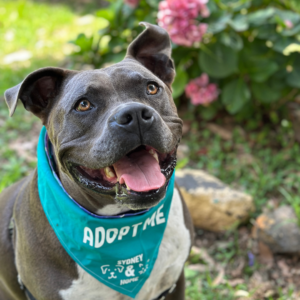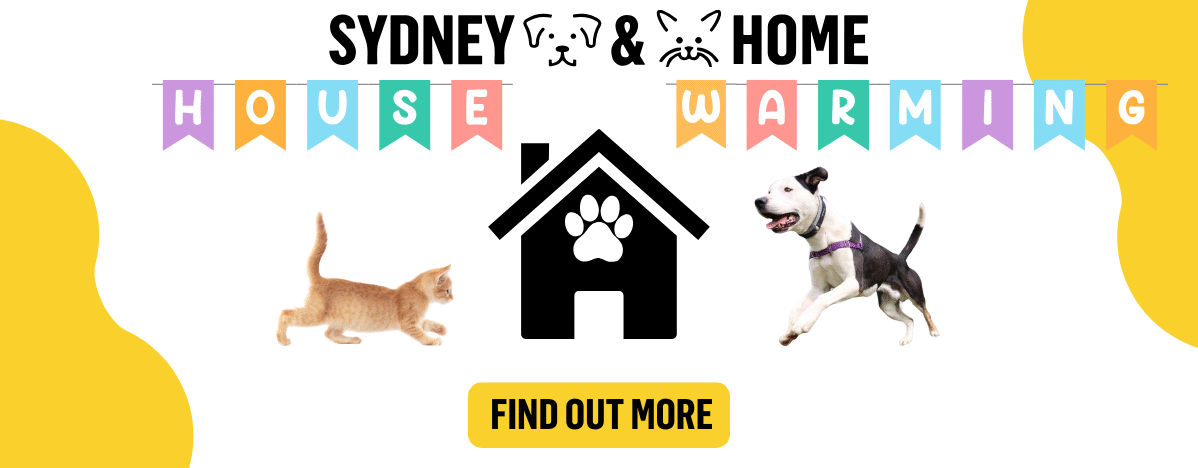BLOG
Basil Sellers Donates $1 Million to Help Make Home Happen
 Today, we’re thrilled to share an extraordinary milestone for Sydney’s lost and abandoned pets.
Today, we’re thrilled to share an extraordinary milestone for Sydney’s lost and abandoned pets.
Philanthropist Basil Sellers AM has made a transformational donation of $1 million towards the construction of our new Sydney Dogs & Cats Home shelter in Kurnell! This incredible generosity brings our Make Home Happen appeal total to over $15.3 million, a major step forward towards our $21.6 million goal.
“My wife Clare and I are delighted to be a part of this wonderful project with Sydney Dogs and Cats Home. To know we are helping to care and house abandoned and lost animals gives us immense pleasure and pride. We have been wanting to be involved in an animal charity for a long time and this fits so well. This is incredibly important to the community, and I know the required monies will be raised with a little help from everyone.” – Basil Sellers AM
 This moment is a testament to the growing support from compassionate individuals, businesses, and our community. With the backing of Basil Sellers, the NSW Government, and countless animal lovers, we’re getting closer to opening the doors of our new Home—one that will provide a safe haven for Sydney’s most vulnerable pets.
This moment is a testament to the growing support from compassionate individuals, businesses, and our community. With the backing of Basil Sellers, the NSW Government, and countless animal lovers, we’re getting closer to opening the doors of our new Home—one that will provide a safe haven for Sydney’s most vulnerable pets.
When our new shelter is complete, we will double the number of lost and abandoned animals we care for each year. That means more pets rescued from abandonment and homelessness, more families reunited with their lost companions, and more second chances for animals to find loving forever homes.
While this generous donation moves us forward in a big way, we still need to raise the final funds to finish the build. Every donation—big or small—will bring us closer to making this dream a reality.
Will you help us cross the finish line? Donate today.
The more people who rally behind this cause, we can reduce the risk of further delays and ensure that when construction is complete, we’re ready to open our doors to pets in need.
Thank you for being part of this historic journey. Together, we can Make Home Happen.
Published 18 February 2025
Helping Your Pet Adjust to Back-to-School
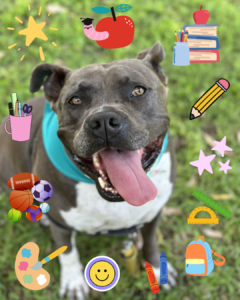 You may be feeling happy, sad, or maybe even a little relieved that the kids are heading back to school – but there’s another family member who’s feeling a lot about it too: your pet.
You may be feeling happy, sad, or maybe even a little relieved that the kids are heading back to school – but there’s another family member who’s feeling a lot about it too: your pet.
For weeks, your furry companion has had their favourite little humans around—playing, cuddling, and keeping them entertained. Now, the sudden quiet can leave them feeling confused, lonely, or even anxious. Here are some simple ways to help your pet adjust to the change:
1. Watch for Signs of Stress
Now that school has started, you may notice changes in your pet’s behaviour, such as excessive barking, pacing, destructive chewing, or loss of appetite. These could be signs of separation anxiety. If your pet is struggling, try increasing enrichment activities and ensuring they get plenty of attention when the family is home. If these behaviours worsen, consult your vet for advice on managing anxiety and ensuring your pet’s well-being.
2. Keep Their Routine Consistent
Pets thrive on routine. Sticking to regular meal times, walks, and play sessions can provide comfort and stability when everything else changes.
3. Make Alone Time Enriching
Bored pets can become destructive or stressed, so keep them occupied with:
🐾 Puzzle toys or treat-dispensing toys
🐾 A comfy spot by a window for people-watching
🐾 Background noise, like calming music or a pet-friendly TV channel
4. Give Them Extra Attention When You’re Home
Set aside dedicated one-on-one time in the mornings and evenings. A good walk before school can help burn off excess energy, making alone time easier to handle.
5. Consider a Playmate or a Helping Hand
If your pet struggles with separation, a doggy daycare, pet sitter, or even a mid-day check-in from a neighbour could help ease their stress.
The back-to-school transition affects the whole family—including your pets. With a little preparation, you can help them feel secure, happy, and loved, even when their best little buddies are away for the day.
Ella’s Purr-fect Starlight Wish
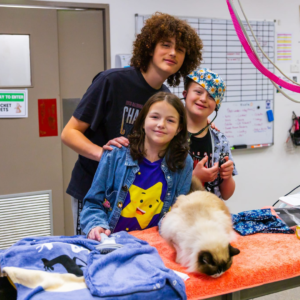 In August last year, we had the pleasure of hosting a very special guest at Sydney Dogs & Cats Home—Ella and her family, as part of her Starlight Wish! Ella is a huge cat lover, and she knew exactly how she wanted to spend her wish: a weekend filled with all things cat-ivities!
In August last year, we had the pleasure of hosting a very special guest at Sydney Dogs & Cats Home—Ella and her family, as part of her Starlight Wish! Ella is a huge cat lover, and she knew exactly how she wanted to spend her wish: a weekend filled with all things cat-ivities!
The weekend began with Ella and her family enjoying the purr-fect day at the Cat Lovers Festival, followed by a cosy meal and plenty of cuddles at a cat café. But the icing on the cake was their visit to us at Sydney Dogs & Cats Home, where Ella got a VIP tour of our shelter. She met the adorable cats that were in our care at the time, and learned more about how we help animals in need and to find loving families.
Ella also got hands-on with our team as a vet nurse, assisting with Penny Lane, a sweet ragdoll cat. Ella listened to Penny Lane’s heartbeat, gave her a little groom, and, of course, had the ultimate highlight—snuggling with seven tiny kittens! It was a moment Ella will surely never forget. To make the day even more memorable, she and her brothers created their very own cat paintings to take home as a souvenir from their unforgettable visit.
We’re so thrilled that Ella and her family had such an exciting and heartwarming experience with us. At Sydney Dogs & Cats Home, our mission is all about bringing pets and people together, and we are over the moon to have been part of Ella’s special wish.
Thank you, Ella, for letting us be a part of your unforgettable journey.
Published January 2025
Meet Mirabella – A Resilient Tabby with a Big Heart
 For close to 200 days, Mirabella has been waiting patiently for her special someone—a loving family to give her the life she truly deserves. This stunning tabby isn’t just beautiful on the outside; her heart is as big as her story.
For close to 200 days, Mirabella has been waiting patiently for her special someone—a loving family to give her the life she truly deserves. This stunning tabby isn’t just beautiful on the outside; her heart is as big as her story.
Mirabella first arrived at Sydney Dogs & Cats Home as a tiny kitten, facing challenges that would test even the toughest of spirits. Covered in ringworm, she endured weeks of treatment before bouncing back like the little fighter she is. But her journey didn’t end there. We later discovered that Mirabella has a heart murmur. Thanks to our incredible veterinary team, she’s undergone an echocardiogram to investigate her condition further.
While her heart murmur makes her unique, it hasn’t dimmed her zest for life. Mirabella is playful, curious, and absolutely adores curling up in cosy spots. She dreams of a forever home with someone who understands her needs and can provide the ongoing care she deserves.
Managing a pet with a heart murmur might sound daunting, but it’s often much simpler than people expect. With regular veterinary check-ups and medication, pets like Mirabella can lead happy, fulfilling lives filled with love and adventure.
Mirabella isn’t asking for much—just a few simple things to help her thrive:
- A calm, loving environment where she can feel safe and comfortable.
- Someone committed to her health, providing occasional check-ups and medication for her heart.
- Unconditional love and care, ensuring she knows just how special she is.
Adopting Mirabella means giving a sweet, deserving cat her chance at a life filled with love and joy. In return, she’ll fill your home with warmth, purrs, and endless affection. She’s resilient, loving, and ready to be your perfect companion.
If you think you could be Mirabella’s special someone, we’d love for you to learn more about her! Visit her profile here to apply and give her the forever home she’s been waiting for.
Because every pet deserves a chance to be loved—and Mirabella has so much love to give.
Published January 2025
Nitro’s Journey: A One-of-a-Kind Dog
When Nitro came to Sydney Dogs & Cats Home almost a year ago, it was clear he was no ordinary dog. With his big heart, goofy grin, and a tail that never stops wagging, Nitro quickly became a cherished part of the Home. But despite his incredible personality, Nitro has spent nearly a year in care—and one of the main reasons is his epilepsy.
While the word “epilepsy” might sound daunting, caring for Nitro is easier than you might think. His condition is well-managed with daily medication, which he takes like a total champ, and regular vet check-ups. His foster carer, Patrick, has done a wonderful job keeping Nitro’s routine consistent, and Nitro has proven just how resilient and adaptable he is. His epilepsy doesn’t hold him back at all—he’s still a happy, playful, and affectionate dog who’s ready to live his best life in a loving home.
Don’t let his name fool you! While Nitro certainly has moments of playful energy, he’s just as happy lounging in the sun or curling up on the couch for a snooze, as he does in his foster home. Nitro is the perfect mix of fun and relaxation, making him an ideal companion for families who enjoy adventure walks and quiet moments.
Nitro is a true people-lover. From kids to seniors, he gets along with everyone he meets, greeting them with a friendly wag and an irresistible smile. Once he bonds with his humans, he’s incredibly loyal and loves to stay by their side, soaking up every bit of affection he can get. He’s also friendly with other dogs, though he prefers a proper introduction before making new canine friends.
We’ve seen firsthand how joyful and adaptable Nitro is. His zest for life remains undiminished, and he’s ready to show his future family just how easy it is to care for him while reaping the rewards of his boundless love and affection.
Nitro dreams of a forever home where he can be showered with cuddles, belly rubs, and all the love he deserves. He’d thrive in a family environment where he can be part of the action, whether it’s a weekend walk or a cosy movie night on the couch. While Nitro enjoys the company of other dogs, he’d be just as happy as the only pet in the home, soaking up all the attention.
This sweet boy has been waiting nearly a year for his chance to meet his forever family. We know the perfect home is out there—one that will welcome Nitro with open arms and give him the life he’s been dreaming of.
If you’re looking for a loyal, loving companion who will fill your home with warmth and joy, Nitro might just be the dog for you. Visit Nitro’s profile here to learn more or send an application to make this boy a part of your family. Every dog deserves a chance to be loved—and Nitro has so much love to give.
Published January 2025
Help Us Build a New Home
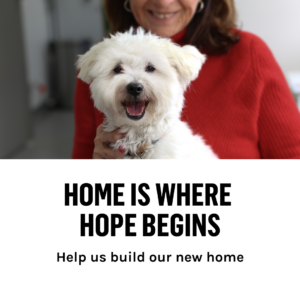 Evicted from our old home due to site redevelopment and now working from temporary facilities, we need a new home. By building a state-of-the-art shelter in Kurnell, we can help over 3,000 animals each year – more than double our current intake. We can be there for even more dogs and cats, kittens and puppies, who are waiting to join their forever homes!
Evicted from our old home due to site redevelopment and now working from temporary facilities, we need a new home. By building a state-of-the-art shelter in Kurnell, we can help over 3,000 animals each year – more than double our current intake. We can be there for even more dogs and cats, kittens and puppies, who are waiting to join their forever homes!
We have the land and cornerstone funding from NSW Government to start the build. Now we urgently need $8 million to complete the build to keep tails wagging, kittens purring and reunions happening.
Sydney Dogs & Cats Home (SDCH) is calling on our wonderful community to help raise $8 million to build a new, state-of-the-art shelter in Kurnell. Just launched, this is our most significant appeal in nearly 80 years, and it’s crucial for us to continue our vital work of caring for thousands of lost, abandoned, and neglected animals.
Two years ago, we were evicted from our long-term home in Carlton due to site redevelopment, and we’ve been operating from two temporary facilities ever since. These facilities are struggling to cope with the increasing number of abandoned pets, a situation worsened by post-COVID-19 circumstances and the cost-of-living crisis.
“At Sydney Dogs & Cats Home, we’re the home of hope for animals in need,” says Melissa Penn, SDCH Managing Director. “We provide extensive medical care, love, shelter, and a chance for a better life to animals who come to us often in dire conditions. We’re an essential service to over 1.1 million Sydneysiders. But now we need the community’s support to help us build our new home.”
Melissa adds, “We’re so close to making our new shelter a reality. We have the site and some existing funding from the government that has made this whole project viable. But unfortunately, spiralling construction costs mean we’re calling on the generosity of Sydneysiders to help us close the gap.”
So far, we’ve secured $1.6 million from our amazing supporters for initial site preparation, architects, planning, and approvals, along with $12 million in cornerstone funding from the NSW Government. However, we still need an additional $8 million to complete the $21.6 million project.
SDCH provides shelter, food, veterinary care, and love to thousands of animals each year. While animals are housed for up to 14 days for their owners to reclaim them, over 70% are never reclaimed, so we care for them for as long as it takes for them to be adopted.
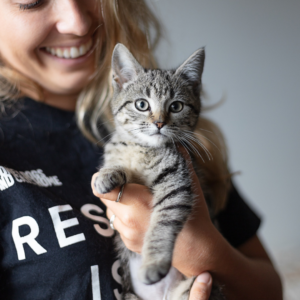 To donate to the Make Home Happen appeal, go here. Your donations will directly contribute to building a new shelter that will:
To donate to the Make Home Happen appeal, go here. Your donations will directly contribute to building a new shelter that will:
- Support over 3,000 incoming animals every year (more than double the current intake)
- Increase adoptions to over 2,000 annually
- Ensure over 1,000 lost pets are reunited with their families annually
- Increase foster care placements to over 800 pets awaiting adoption
- Expand current services to more Sydney Councils
- Improve Sydney’s animal welfare and management
- Extend community outreach programs to improve the health and wellbeing of vulnerable Sydneysiders in aged care and domestic violence situations, provide mental health support to various groups, and support people in criminal justice programs
- Offer TAFE and University students studying veterinary sciences research, training, and practical education opportunities
For more information and to support Sydney Dogs & Cats Home to build our new home, read more here and help us build a better future for Sydney’s animals. Together, we can make a big difference!
Fostering a Rescue Pet
 Love pets but not ready to commit to one for life? Check out how you can be a foster carer, instead – and help out an animal in need.
Love pets but not ready to commit to one for life? Check out how you can be a foster carer, instead – and help out an animal in need.
In this blog post, we’ll explore the world of fostering, from its benefits and rewards to practical tips for getting started.
The Power of Fostering
For many animals, entering a shelter environment can be overwhelming and stressful. Fostering offers these pets a chance to escape the confines of a kennel and experience the comforts of a home environment. By opening their homes to rescue pets, foster families provide a safe haven where these animals can heal, decompress, and receive individualised attention, socialisation, and behavioural rehabilitation tailored to their specific needs. There are countless success stories of pets who have blossomed in foster care, going on to find their forever homes thanks to the love and dedication of their foster families.
Fostering rescue animals provides them with a temporary home environment, which can greatly ease their transition to a permanent home. This experience can make them more adaptable and less stressed when they move to their forever homes. However, it’s important to remember that pets in kennels also receive care and love from dedicated shelter staff and volunteers. The goal is always to ensure every animal feels safe and cherished, whether they’re in a foster home or awaiting adoption at the shelter.
Benefits of Fostering for Foster Carers
Fostering a pet is the opportunity to make a tangible and meaningful difference in the life of a rescue animal. By opening their hearts and homes to a pet in need, foster carers play a direct role in saving lives and helping pets on their journey to find their forever homes. The sense of fulfilment that comes from knowing you’ve made a positive impact on an animal’s life is truly unparalleled.
Fostering also provides foster carers with the opportunity to experience the joy of companionship and connection with a furry friend. For individuals who may not be ready to commit to permanent pet ownership, fostering allows them to enjoy the benefits of having a pet in their lives without the long-term commitment.
 Fostering also offers foster carers the flexibility in terms of the type of animal they foster and the duration of their commitment. They have the freedom to choose animals that align with their lifestyle, preferences, and availability, allowing them to tailor their fostering experience to suit their needs.
Fostering also offers foster carers the flexibility in terms of the type of animal they foster and the duration of their commitment. They have the freedom to choose animals that align with their lifestyle, preferences, and availability, allowing them to tailor their fostering experience to suit their needs.
Who can become a pet foster carer?
Anyone with a love for animals and a willingness to open their heart and home can become a pet foster carer! Whether you’re a family, a single individual, a retiree, a student or someone who can welcome a second pet into your home. As long as you have the time, space, and love to care for a foster pet, you can make a difference in the life of an animal in need. At Sydney Dogs & Cats Home, we provide the majority of the tools and equipment to foster a rescue animal and provide ongoing support for the duration of your foster pets stay with you.
We also have options for short-term fostering in the case existing foster carers are going on holidays, away for work or other circumstances where they are unable to look after their foster pet for a short period. This helps prevent foster pets from returning to the shelter environment, potentially undoing any behaviours that were worked on in foster, and keeps space open for pet intakes.
How do I become a foster carer?
If you are inspired by the idea of fostering rescue animals, consider reaching out to Sydney Dogs & Cats Home, we made the process easy! Complete the sign-up form and our team will be in contact with you.
Let’s make a difference together! 🙂
Common Plants Toxic to Pets
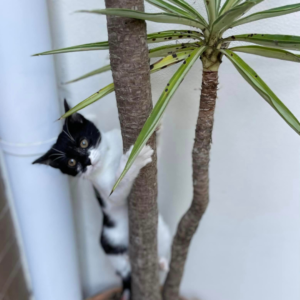 When it comes to the health and safety of our furry friends, pet owners go to great lengths to provide a safe and loving environment. However, many common household and garden plants can pose serious threats to pets. Understanding which plants are toxic is crucial to keeping our pets healthy. Here’s a guide to some of the most common toxic plants that could be lurking in your home or yard.
When it comes to the health and safety of our furry friends, pet owners go to great lengths to provide a safe and loving environment. However, many common household and garden plants can pose serious threats to pets. Understanding which plants are toxic is crucial to keeping our pets healthy. Here’s a guide to some of the most common toxic plants that could be lurking in your home or yard.
1. Lilies
Toxic to: Cats
Symptoms: Kidney failure, vomiting, lethargy, loss of appetite
Lilies are beautiful and fragrant, but they are highly toxic to cats. Even small amounts of pollen or water from a vase containing lilies can cause severe kidney damage and can be fatal.
2. Sago Palm
Toxic to: Dogs and cats
Symptoms: Vomiting, diarrhea, liver failure, seizures, death
Sago palms are popular ornamental plants, but all parts of the plant, especially the seeds, contain cycasin, a toxin that can cause severe liver damage.
3. Tulips and Hyacinths
Toxic to: Dogs and cats
Symptoms: Drooling, vomiting, diarrhea, central nervous system depression, respiratory issues
The bulbs of tulips and hyacinths contain toxins that can irritate the mouth and esophagus. Ingesting large amounts can lead to more serious problems.
4. Oleander
Toxic to: Dogs and cats
Symptoms: Severe vomiting, decreased heart rate, cardiac arrest, death
Oleander is highly toxic to pets and humans alike. The plant contains cardiac glycosides that can cause serious heart issues.
5. Azaleas and Rhododendrons
Toxic to: Dogs and cats
Symptoms: Vomiting, drooling, diarrhea, weakness, heart failure
Azaleas and rhododendrons contain grayanotoxins, which can disrupt the normal function of the heart and nervous system.
6. Dieffenbachia (Dumb Cane)
Toxic to: Dogs and cats
Symptoms: Oral irritation, drooling, vomiting, difficulty swallowing
Dieffenbachia is a common houseplant that can cause intense oral irritation and swelling of the tongue, mouth, and throat if ingested.
7. Autumn Crocus
Toxic to: Dogs and cats
Symptoms: Severe gastrointestinal distress, liver and kidney damage, respiratory failure, death
Autumn crocus contains colchicine, a substance that is extremely toxic and can cause multiple organ failure.
8. Philodendron
Toxic to: Dogs and cats
Symptoms: Oral irritation, drooling, vomiting, difficulty swallowing
Philodendron plants contain calcium oxalate crystals that can cause significant oral irritation and swelling if ingested.
9. English Ivy
Toxic to: Dogs and cats
Symptoms: Vomiting, abdominal pain, hypersalivation, diarrhea
English ivy is a popular climbing plant that can cause gastrointestinal issues and discomfort if consumed by pets.
10. Aloe Vera
Toxic to: Dogs and cats
Symptoms: Vomiting, diarrhea, lethargy, tremors
While aloe vera is known for its healing properties in humans, it contains saponins and anthraquinones that can be harmful to pets if ingested.
What to Do if Your Pet Ingests a Toxic Plant
If you suspect your pet has ingested a toxic plant, it’s important to act quickly:
- Remove any plant material from your pet’s mouth.
- Rinse their mouth with water to remove any remaining plant material.
- Contact your veterinarian immediately.
- If possible, identify the plant they ingested.
Safe Alternatives
Fortunately, there are many pet-safe plants you can choose for your home and garden, such as:
- Spider plants
- Boston ferns
- Areca palms
- Basil
- Rosemary
As much as we love to decorate our homes and gardens with beautiful plants, it’s important to be aware of those that can be harmful to our pets. By choosing pet-safe plants and keeping toxic ones out of reach, we can ensure that our furry friends remain healthy and happy. Always consult with your veterinarian if you have any concerns about plant toxicity and your pets.
Safe Interactions Between Kids & Rescue Dogs
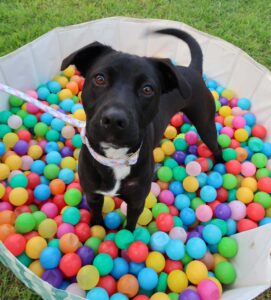 Bringing a rescue dog into your home can be a rewarding experience, offering a second chance at life for a deserving animal and providing your family with a loyal and loving companion. However, ensuring safe and positive interactions between kids and rescue dogs is crucial in creating a harmonious and happy household. Here are some tips and guidelines to help foster safe interactions and build strong bonds.
Bringing a rescue dog into your home can be a rewarding experience, offering a second chance at life for a deserving animal and providing your family with a loyal and loving companion. However, ensuring safe and positive interactions between kids and rescue dogs is crucial in creating a harmonious and happy household. Here are some tips and guidelines to help foster safe interactions and build strong bonds.
Understanding your rescue dog’s background
Rescue dogs can come from challenging backgrounds. Understanding and respecting their past experiences is essential in creating a safe environment for them and your children. Here’s how to get started:
- Learn about your dog’s history: Before bringing a rescue dog home, gather as much information as possible about their past. This can help you anticipate potential triggers and behaviours.
- Be patient and observant: Allow your dog time to adjust to their new environment. Watch for signs of anxiety or discomfort and address them promptly.
Actively supervising and physically separating
The most important thing is to always actively supervise when your child and your dog are together. You can make physical separation easier by setting up playpens and baby gates to create barriers. Make sure babies, young children and dogs are closely supervised at all times (within arm’s reach and without distractions) when they’re together, especially during playtime.
Never place children on top of or next to your dog. Keep their face out of the dog’s face, and get into the habit of putting yourself between the dog and baby (like when you’re sitting on the floor or couch).
Teaching kids about safe interactions
Educating your children on how to interact safely and respectfully with the new family member is vital. Here are some key points to cover:
- Approach calmly and slowly: Teach kids to invite the dog to them instead of approaching the dog. Explain the importance of being calm and avoiding sudden movements or loud noises that might startle the dog.
- Respect personal space: Explain the importance of giving the dog space, especially when they are eating, sleeping, chewing or resting in their designated area.
- Recognise body language: Help children understand dog body language. For instance, a wagging tail does not always mean a dog is happy, and a dog showing teeth is a clear sign to back off.
 Creating a safe space for the dog
Creating a safe space for the dog
Setting up a special and safe area in a quiet place in the home for your dog to retreat to when they need space. It can be a bed or crate. Teach your kids that it’s a special alone place for your dog to go to and that they’re not allowed in it when your dog is there. You can even stick a line of masking tape about a metre from the area to help kids (and adults!) learn boundaries around the dog. They can call the dog over the line to them, and if the dog comes, great! If not, leave them alone (and never enter the space while the dog is in there).
Learning how your dog communicates
Our dogs are always telling us things and use their body to communicate. Some signs can be subtle, so it’s important to make sure that you and all other adults and kids in the household are familiar with your dog’s body language. This will mean you can spot any early warning signs that your dog is stressed, uncomfortable, scared or frustrated, and you can separate them from your child immediately before it escalates.
The earliest signs that your dog is uncomfortable are signs of avoidant behaviour such as turning their face away, leaning their bodyweight away, and trying to walk away.
Other common early indicators that your dog is uncomfortable and should be separated from your child include:
- Stiff body
- Closed mouth
- Turning their head away
- ‘Whale eye’
- Yawning
- Tongue flicks
- Tense facial muscles
- Quick and shallow breathing
- Shaking off
- Excessive grooming, like scratching or licking
Building trust and bonding
Building a strong, trusting relationship between your children and the rescue dog takes time and effort but is incredibly rewarding. Here’s how to encourage bonding:
- Positive reinforcement: Use positive reinforcement techniques to encourage good behaviour in the dog. Praise, treats, and affection can help build trust and reinforce positive interactions.
- Shared activities: Engage in activities that both the dog and the kids can enjoy together, such as gentle play, walks, and training sessions. This helps to build a bond and establish positive associations.
- Respect and compassion: Teach children to be compassionate and empathetic towards the dog’s feelings and needs. This fosters mutual respect and understanding.
Introducing a rescue dog into your family can be a wonderful experience, especially when you ensure that interactions between your kids and your rescue dog are safe and positive. By educating your children, creating a safe environment, and building trust, you can help foster a loving and harmonious relationship that benefits both the dog and your family. Remember, patience and understanding go a long way in helping a rescue dog feel at home and become a cherished member of your family.
If you are concerned about the safety of your child or dog, please contact Ana at behaviour@sdch.org.au as soon as possible.
Willow’s Journey: From Shelter to Forever Home
 Willow spent her first week of 2024 lost before coming into Sydney Dogs & Cats Home. At 12 years old, this golden oldie should have been spending her days relaxing in her home, not in a shelter. Willow was safely off the streets and happily spending her days snoozing and going on walks with staff and volunteers and making doggy friends.
Willow spent her first week of 2024 lost before coming into Sydney Dogs & Cats Home. At 12 years old, this golden oldie should have been spending her days relaxing in her home, not in a shelter. Willow was safely off the streets and happily spending her days snoozing and going on walks with staff and volunteers and making doggy friends.
While Willow was a happy dog and in good spirits, she had dental disease and needed some teeth extracted to reduce any pain and discomfort and she was diagnosed with osteoarthritis in her hips and hind legs. Willow underwent surgery to remove the affected teeth and was put on medication to help with the osteoarthritis. Willow spent the next few weeks in the shelter recovering and becoming the office dog during the hot summer days, basking in the cool AC.
It wasn’t long before Willow caught the eye of Sarah-Jane and her family who brought Willow home at the end of February. Sarah-Jane sent an update recently and has commented on how wonderful Willow has slotted into her new family’s home and lives, “it’s as if she has been here all along!”
Willow has been quite fond of Sarah-Jane, sleeping next to her bed and under the desk while she is working. Willow has become fond of dinner time, parking herself in the kitchen amongst the action.
Apart from spending time with her humans and dinner time, Willow enjoys her twice daily walks and visiting the pet supply store for new treats and squeaky toys, and always receives a lot of love when out and about.
We’re so happy to see a senior dog like Willow receiving the love she deserves.
If you are looking to add a furry friend to your life, consider an older pet who still has so much love to give.
Published April 2024
Archives
- February 2025
- January 2025
- August 2024
- July 2024
- June 2024
- April 2024
- February 2024
- January 2024
- October 2023
- September 2023
- August 2023
- June 2023
- March 2023
- February 2023
- January 2023
- December 2022
- November 2022
- October 2022
- September 2022
- June 2022
- May 2022
- March 2022
- February 2022
- December 2021
- November 2021
- October 2021
- September 2021
- July 2021
- April 2021
- March 2021
- February 2021
- January 2021
- December 2020
- November 2020
- October 2020
- September 2020
- August 2020
- June 2020
- May 2020
- April 2020
- January 2020
- November 2019
- October 2019
- September 2019
- August 2019
- July 2019
- June 2019
- May 2019
- March 2019
- January 2019
- November 2018
- October 2018
- September 2018
- August 2018
- July 2018
- June 2018
- May 2018
- April 2018
- February 2018
- January 2018
- December 2017
- November 2017
- October 2017
- September 2017
- August 2017
- May 2017




 MON-SUN:
MON-SUN:
 02 9587 9611
02 9587 9611 INFO@SYDNEYDOGSANDCATSHOME.ORG
INFO@SYDNEYDOGSANDCATSHOME.ORG





